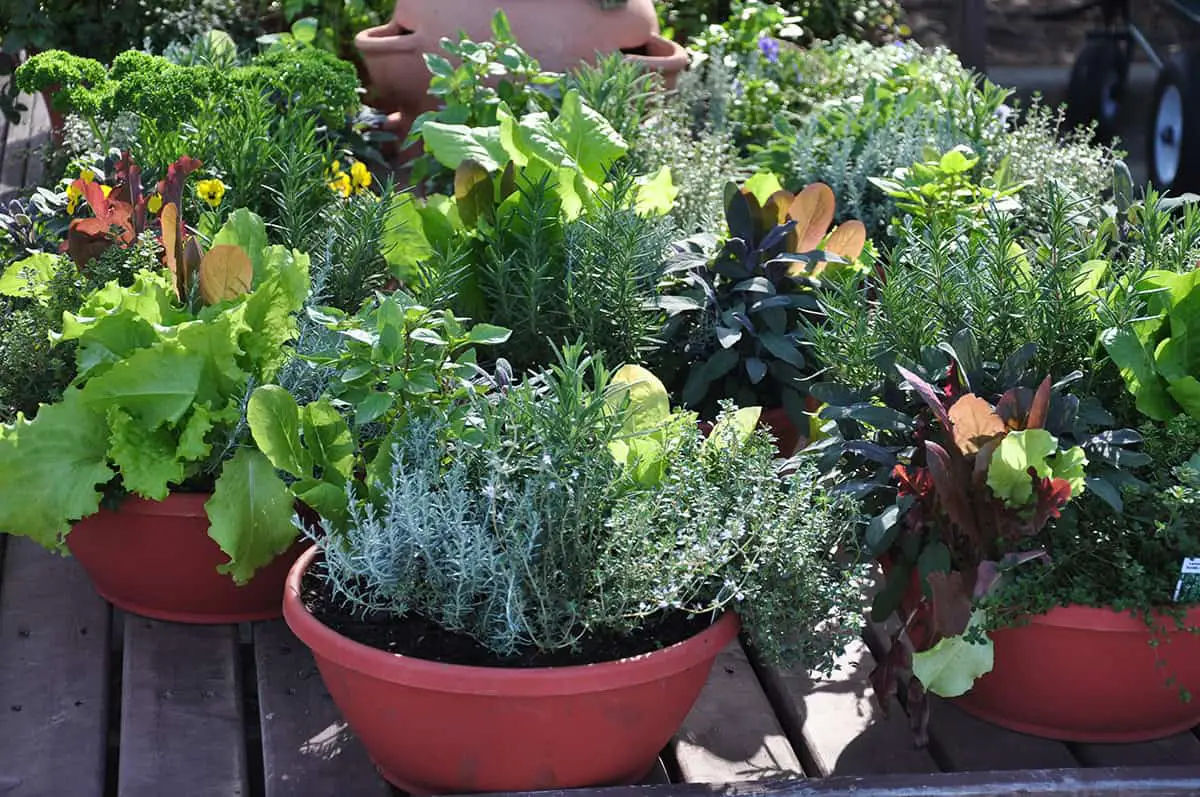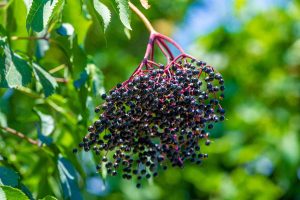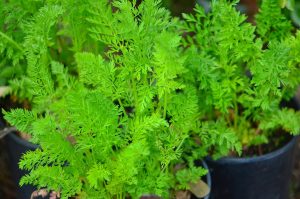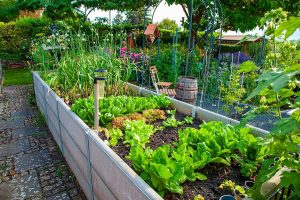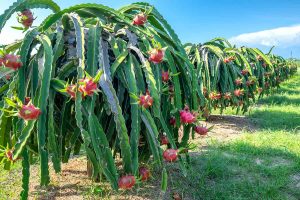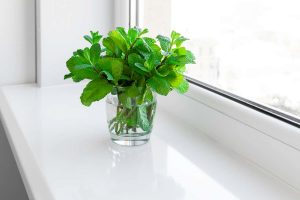You want to grow your vegetables, but your apartment balcony only gets a few hours of sunlight each day. No problem—there are plenty of vegetables that thrive in shade and can be grown in pots.
Discover 20 vegetables that will flourish in your shaded space, allowing you to enjoy fresh, homegrown produce no matter where you live.
Table of Contents
Lettuce
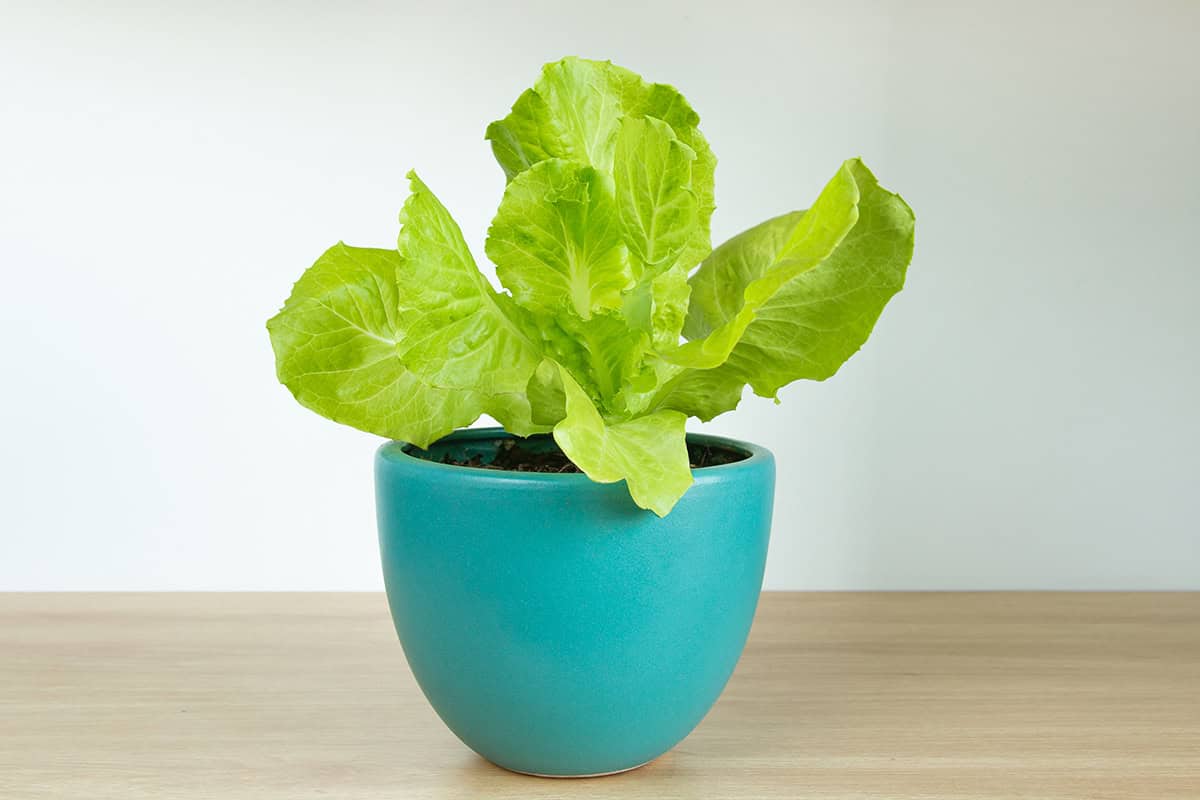
Lettuce is a popular vegetable that grows well in shade conditions. You can easily grow it in pots, and it thrives with partial sunlight. Choosing the right variety is essential; leaf lettuce works best for container gardening.
Use a pot that holds at least 1/2 gallon of soil. Ensure it has good drainage to prevent water stagnation. Lettuce prefers cool conditions, making it suitable for shaded spots.
Water lettuce plants regularly, keeping the soil moist but not waterlogged. This vegetable is relatively low-maintenance. You can space multiple plantings about two weeks apart for a continuous harvest.
Lettuce’s shallow roots mean it won’t need deep pots. This makes it perfect for balconies or patios with limited space. Fertilize lightly to encourage growth, using a balanced mix.
Harvest lettuce by picking outer leaves as needed, allowing the plant to keep producing. This method ensures you have fresh greens over several weeks. Regular harvesting also promotes new growth.
Spinach
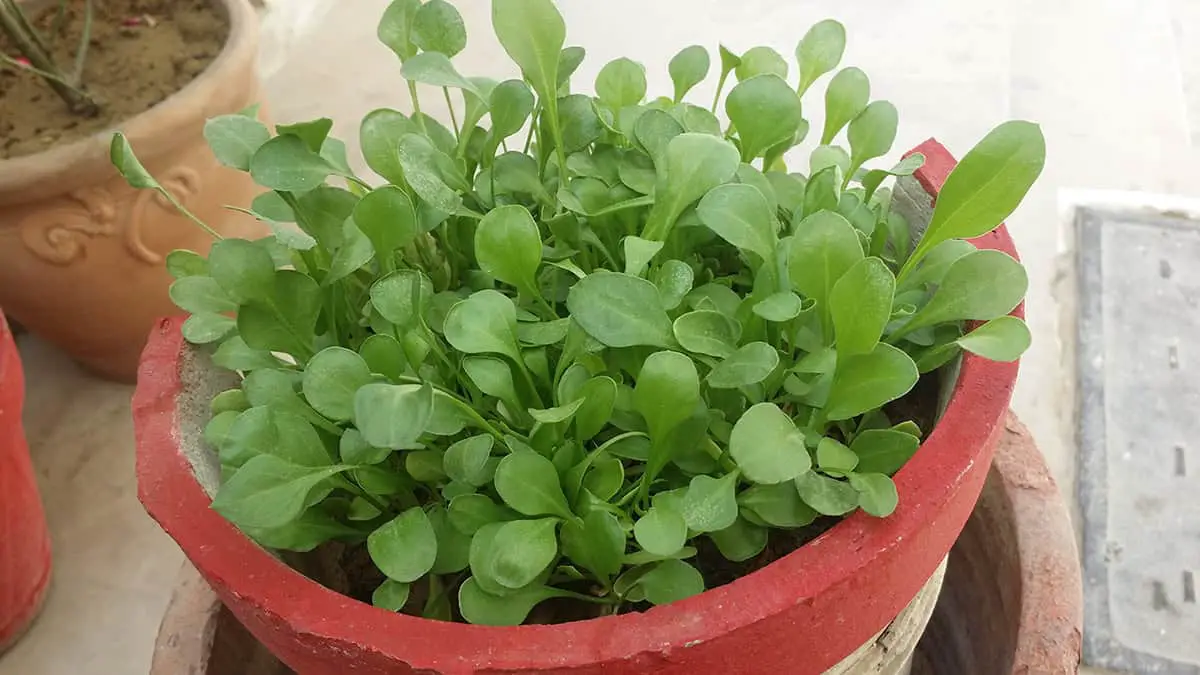
Spinach is a versatile and nutritious vegetable. You can grow it in shade in pots, so it’s a great option for small spaces or indoor gardens.
Spinach thrives in cooler temperatures between 50°F and 60°F. It will bolt if the soil dries out, so keep the soil consistently moist but avoid waterlogging.
You can plant spinach in containers or garden beds. It grows well in rich, well-drained soil. To plant seeds, sow them 1/4 to 1/2 inch deep. Thin seedlings to 2-3 inches apart for optimal growth.
Spinach can tolerate some shade, which is beneficial in hot weather. It needs at least 3-4 hours of sunlight per day.
For container gardening, fill the pot with a good potting mix. Ensure the soil has good drainage. Spinach will do well with regular misting to keep the soil moisture balanced.
Spinach varieties like Malabar and Water spinach can adapt to different growing conditions. Malabar spinach has glossy green leaves and purple stems. It is suitable for hot climates. Water spinach is heat-tolerant and grows quickly.
Kale
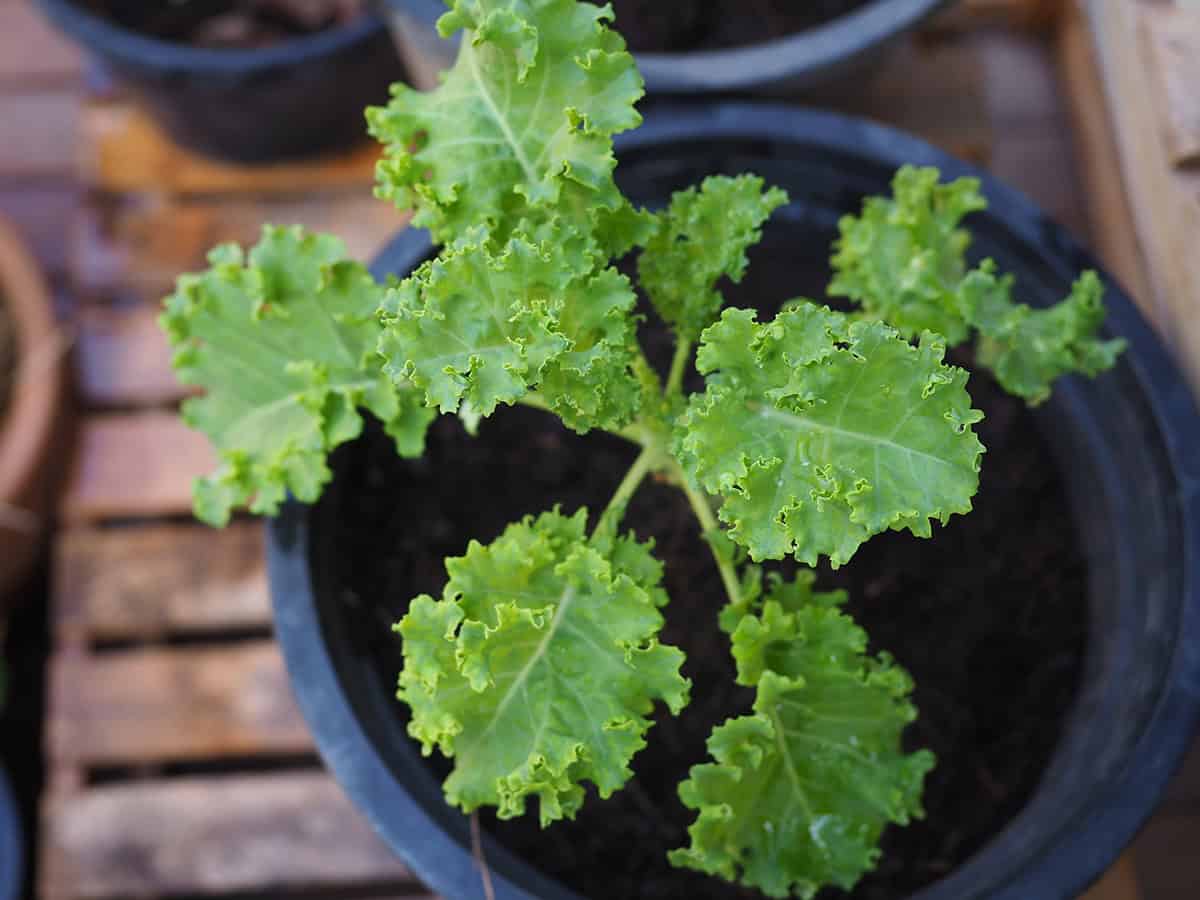
Kale is a great vegetable to grow in pots, especially in shade.
Kale thrives in cooler temperatures and partial shade, making it perfect for shaded balconies or patios. It prefers rich, well-drained soil and consistent moisture. Use deep pots to allow for root growth. Kale can handle a bit of crowding, so you can plant multiple seeds in a single pot.
This leafy green is often considered a superfood due to its high vitamin and mineral content. Kale contains iron, calcium, and vitamins A, C, and K. It’s beneficial for overall health and adds a nutritious boost to diets.
Water kale regularly to keep the soil moist. Use a moisture meter or feel the soil to gauge when to water. Fertilize with organic or slow-release fertilizers at planting to support healthy growth throughout the season.
For best results, thin seedlings to 12-18 inches apart. This spacing allows for sufficient airflow and reduces disease risk.
To harvest, pick the outer leaves first, leaving the central leaves intact for continuous growth. Kale tastes best when harvested young or after a light frost. Frost improves its sweetness and tenderness.
Growing kale in pots offers flexibility. You can move pots to optimal sun and shade spots as needed. This adaptability makes it ideal for small spaces and urban gardening.
Arugula
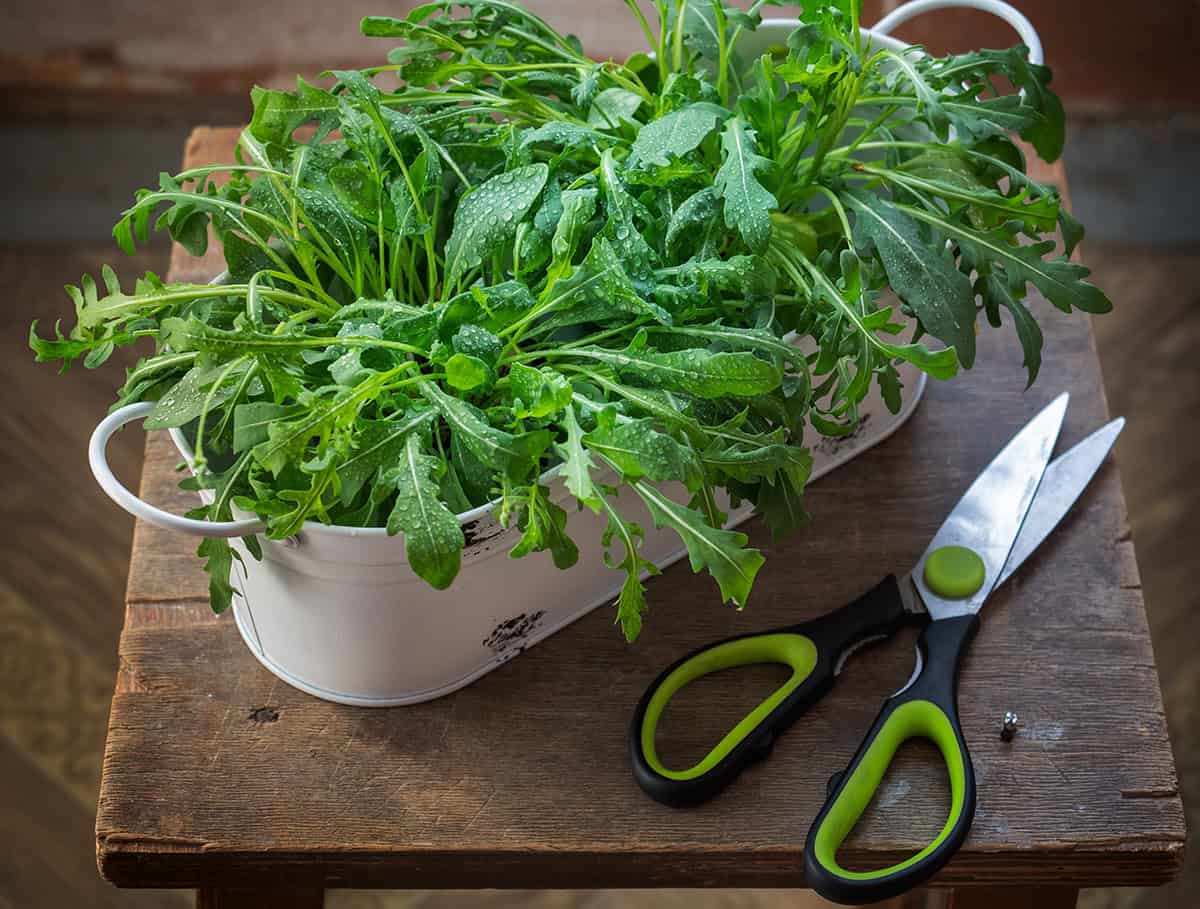
Arugula is perfect for growing in pots. It prefers cool weather, making it suitable for shaded areas. This leafy green, also known as rocket or garden rocket, thrives between 50°F to 65°F (10°C to 18°C).
Plant arugula seeds about a quarter inch deep. Space them one to two inches apart. Keep a foot between rows. Thinning young plants to four or five inches apart helps them grow better.
Arugula germinates quickly, even in cold soil. You can start planting as soon as the soil can be worked in spring. Young arugula plants add a peppery flavor to salads and sandwiches.
Avoid planting arugula after other Brassicaceae family crops. These include cabbage and broccoli. Use thinned seedlings in your meals to minimize waste.
In hot weather, arugula may bolt. This means it will flower and go to seed quickly. To prevent bolting, provide afternoon shade when temperatures rise above 85°F (29°C).
Arugula is not just for spring. You can also plant it in the fall. It transplants well if you prefer buying young plants instead of starting from seed.
Grow arugula in shallow pots or containers. It has shallow roots so a depth of six to eight inches is sufficient. Keep the soil moist but not waterlogged. Regular watering ensures consistent growth and flavor.
Swiss Chard
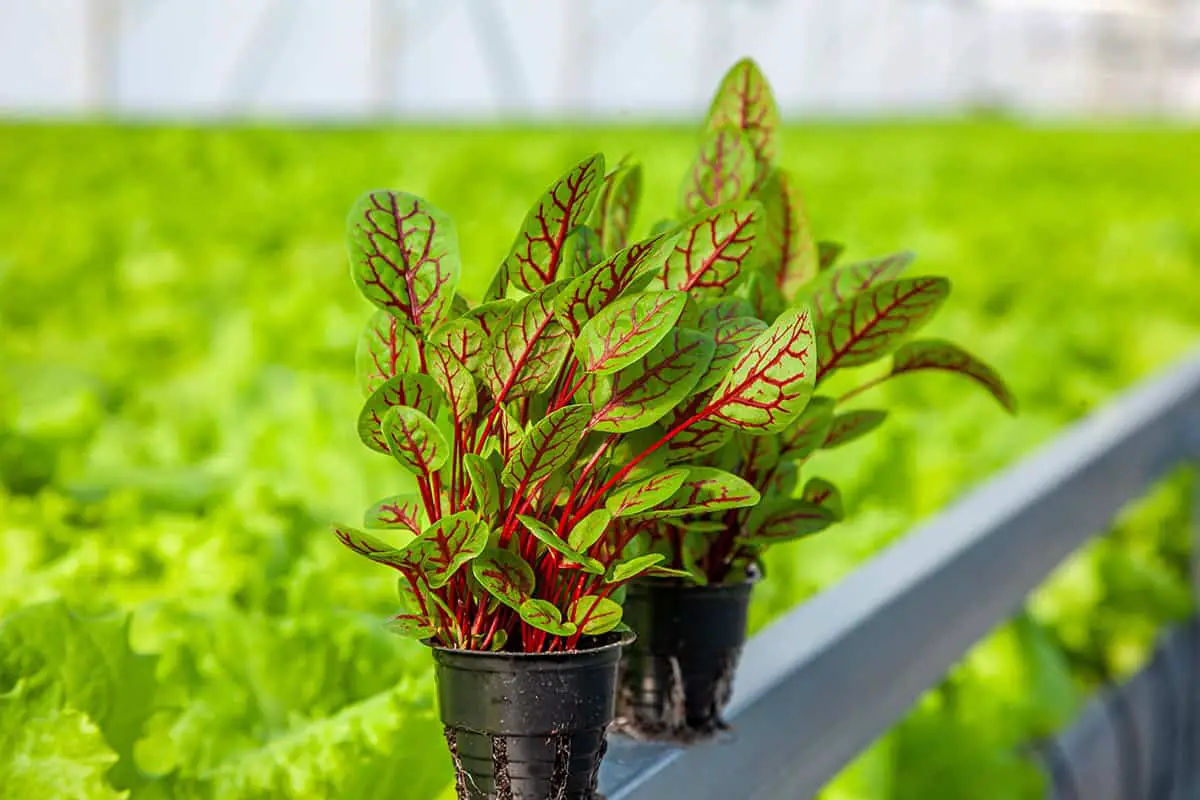
Swiss chard can grow in shaded areas. It prefers fertile, well-drained soil. Make sure to plant the seeds about an inch deep. Space them 4-6 inches apart. Later, thin them to about a foot apart.
Swiss chard tolerates partial shade. It also handles a variety of temperatures. It thrives best between 55°F and 75°F. Chard can withstand light frosts.
It’s known for its colorful stalks. These vibrant colors add beauty to any garden. The leaves are tender and mild in flavor. You can use them as a spinach alternative.
You can plant Swiss chard in pots easily. Use a container that is at least 12 inches deep. This allows the roots to grow well. Water the plants regularly to keep the soil moist.
Swiss chard is also semi-hardy. It can grow through different seasons. In mild climates, it can even grow year-round. The plant is a biennial but often treated as an annual.
Growing chard from seed is practical. Seeds usually take 7-14 days to germinate. You can start seeds indoors if you prefer. Transplant them outside when they have 3-4 true leaves.
Beet Greens

Beet greens thrive in shady conditions, making them perfect for container gardening when sunlight is limited. They are nutritious and versatile, rich in vitamins A, C, and K. You can harvest beet greens when they are young and tender.
To grow beet greens in pots, choose a container at least 8 inches deep. Fill it with well-drained potting soil. Beets need consistent moisture, so water regularly to keep the soil moist but not soggy.
Place your container in a location that gets partial shade. Beet greens can tolerate less light than many other vegetables. Thin the seedlings to allow room for growth. This promotes healthy leaves.
Beet greens do well in temperatures between 50 and 75 degrees Fahrenheit. Extreme heat or cold can affect their growth. They need regular feeding with a balanced fertilizer to thrive.
You can start harvesting beet greens about four to six weeks after planting. Cut the outer leaves first, allowing the inner leaves to grow. This way, you can enjoy a continuous harvest from your container garden.
Ensure your container has good drainage to prevent root rot. Beet greens will reward your care with nutritious, tasty leaves.
Broccoli

Broccoli grows well in partial shade. It prefers temperatures between 60°F and 70°F. This makes it perfect for cooler spring and fall weather. Start seeds indoors and transplant them.
Plant broccoli in pots that are at least 12 inches deep. Use fertile, well-draining soil. Space plants are about 18 to 24 inches apart.
Use a balanced fertilizer, such as 10-20-10, once a month. Water regularly. Soil should stay moist but not waterlogged.
Broccoli is mature when the heads are firm and tight. Harvest before flowers appear. Snip the heads off with a sharp knife to encourage more side shoots.
Cauliflower

Cauliflower thrives in cool temperatures and can tolerate some shade. It’s a versatile vegetable that grows well in pots. For successful growth, use a pot that is at least 12 inches deep and wide. This allows enough space for the roots to develop.
Plant cauliflower seeds indoors. Transplant them outdoors when seedlings are strong. You can plant directly in containers. Ensure the soil is rich and well-draining.
Keep the soil consistently moist. Mulch helps retain moisture. Water the plants regularly, but avoid waterlogging. Use a liquid fertilizer every four weeks to support growth.
Choose a spot that gets partial shade. Cauliflower needs at least 4-6 hours of sunlight daily. It performs well in temperatures between 60°F and 70°F.
Harvest the heads when they are compact and white. Cut the main stem and leave a few green leaves to protect the heads. Harvest heads within 7 to 12 days after they reach full size.
Growing cauliflower in containers is manageable. It allows for the easy relocation of plants to protect them from adverse weather conditions. It’s an excellent way to make the most of a shaded patio or balcony.
Radishes
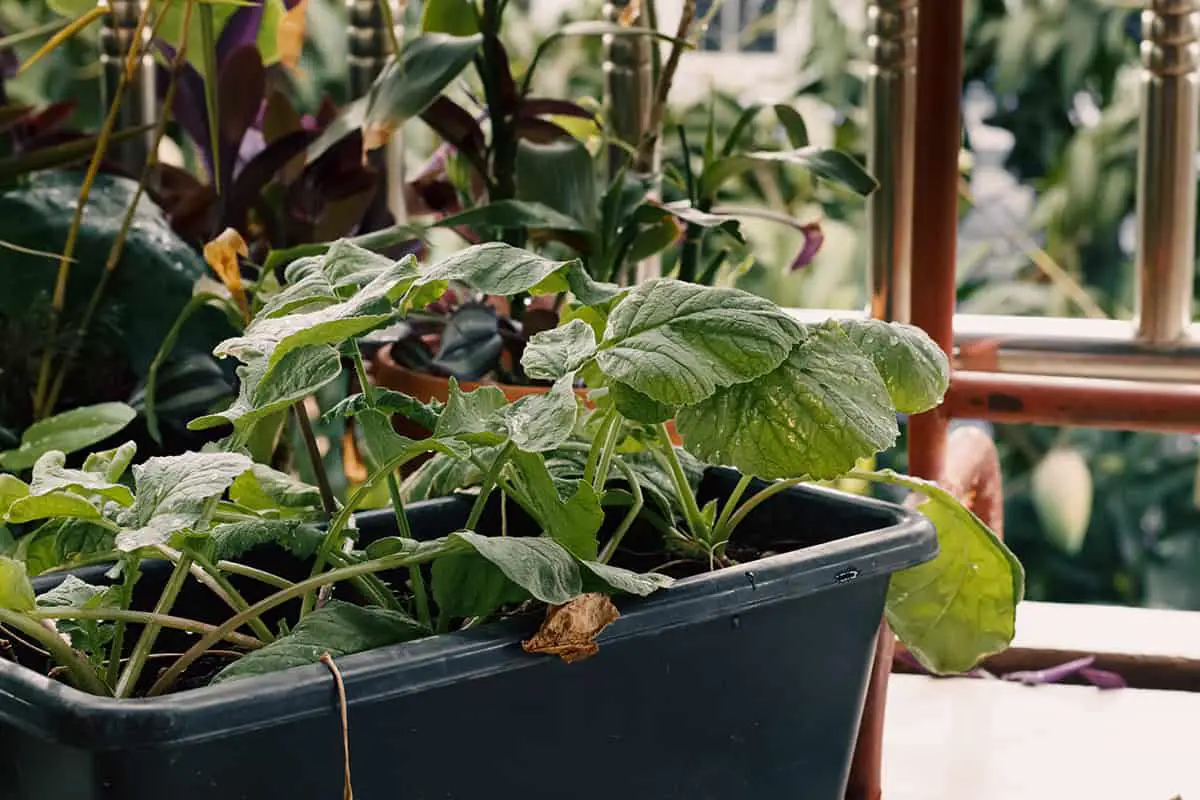
Radishes are a great choice for growing in shade. They thrive in cooler conditions, making them perfect for shaded areas.
When growing radishes in pots, use containers that are at least 6 inches deep. This depth allows the roots to develop properly. Deep pots also hold moisture longer, which is beneficial for radishes.
Radishes can be grown in various colors including white, red, pink, and even black. These colorful vegetables not only add variety to your garden but also to your meals.
Plant radish seeds from April through early May, and again in August. They can tolerate cold weather, which makes them versatile for different seasons.
Keep the soil loose before planting, at least 6 inches deep. For longer types like daikon, make sure the soil depth is a foot or more.
Radish roots can develop poor flavor and tough texture due to drought stress. Ensure the soil stays consistently moist to avoid this issue.
Avoid excess nitrogen fertilizers; they can cause excessive leaf growth at the expense of the root.
In terms of yield, expect about 3 lbs. of radishes per 10-foot row in optimal conditions. Small spring varieties often mature quickly and are best for pot cultivation.
Carrots
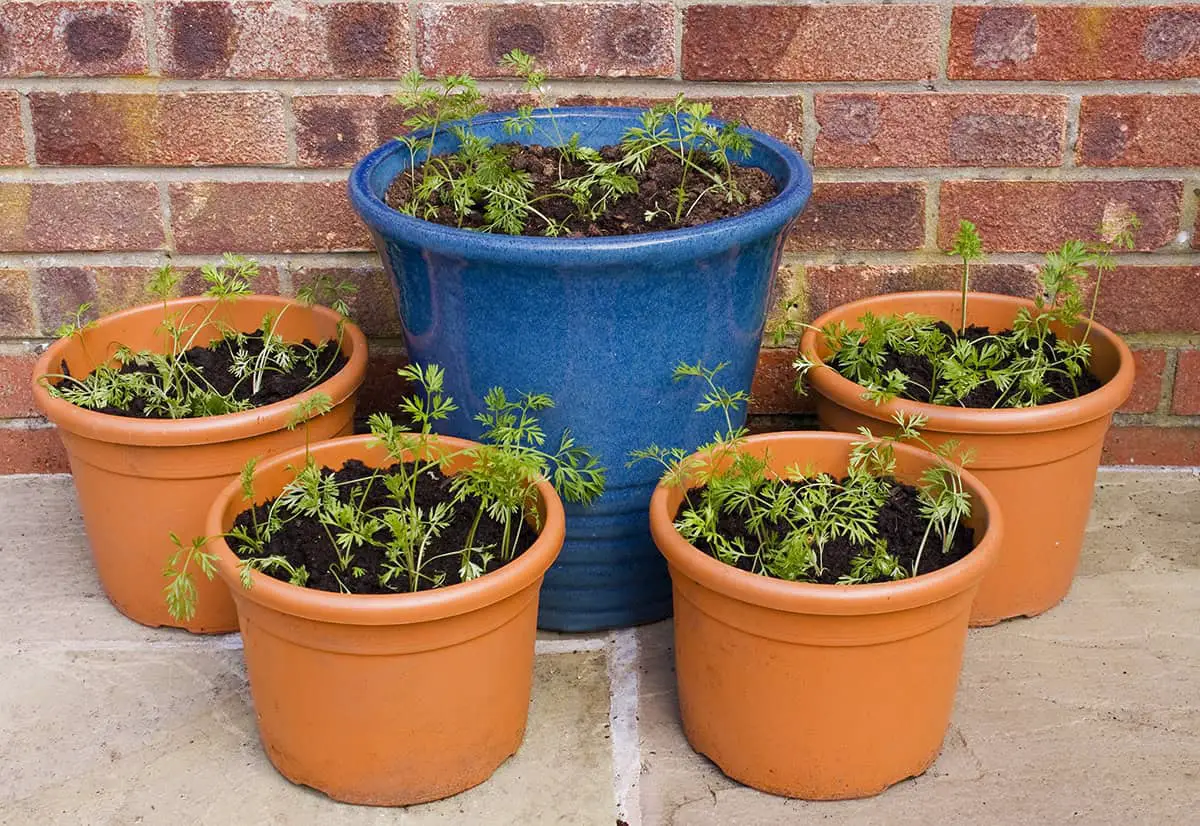
Carrots are an excellent vegetable to grow in pots, especially if you’re dealing with shaded areas. They thrive in containers with well-draining soil and need regular watering. To grow carrots in pots, follow these steps.
Use a container that’s at least 12 inches deep. This depth allows the carrots to develop properly. Fill the container with a lightweight potting mix. Avoid using garden soil directly as it can be too heavy.
Plant the carrot seeds about 1/4 inch deep. Space the seeds about an inch apart. Once they sprout, thin them to about 2-3 inches apart. This spacing ensures each carrot has enough room to grow.
Carrots take about 90 days to mature. If you plant in late summer, you’ll have a harvest ready in the fall. Regularly weed the container to prevent competition for nutrients.
Ensure the pot gets partial sunlight, ideally 4-6 hours a day. Shade from taller plants can help provide the right conditions. Keep the soil consistently moist but not waterlogged.
Using liquid fertilizer can enhance growth. Mix granular fertilizer into the soil before planting to give the carrots a strong start. Use liquid fertilizer as the plants grow.
Peas

Peas thrive in partial shade, making them ideal for growing in pots. Ensure they receive at least 4-6 hours of sunlight daily. Peas can grow well with minimal fertilizer, which is perfect for container gardening.
Choose a pot with good drainage. Use fertile, well-drained potting mix for best results. Sow seeds 1-2 inches apart and 1/2 to 1 inch deep. Water them regularly but avoid waterlogging.
The ideal temperature range for growing peas is between 55°F and 65°F. This makes early spring and late autumn perfect planting times.
Garlic
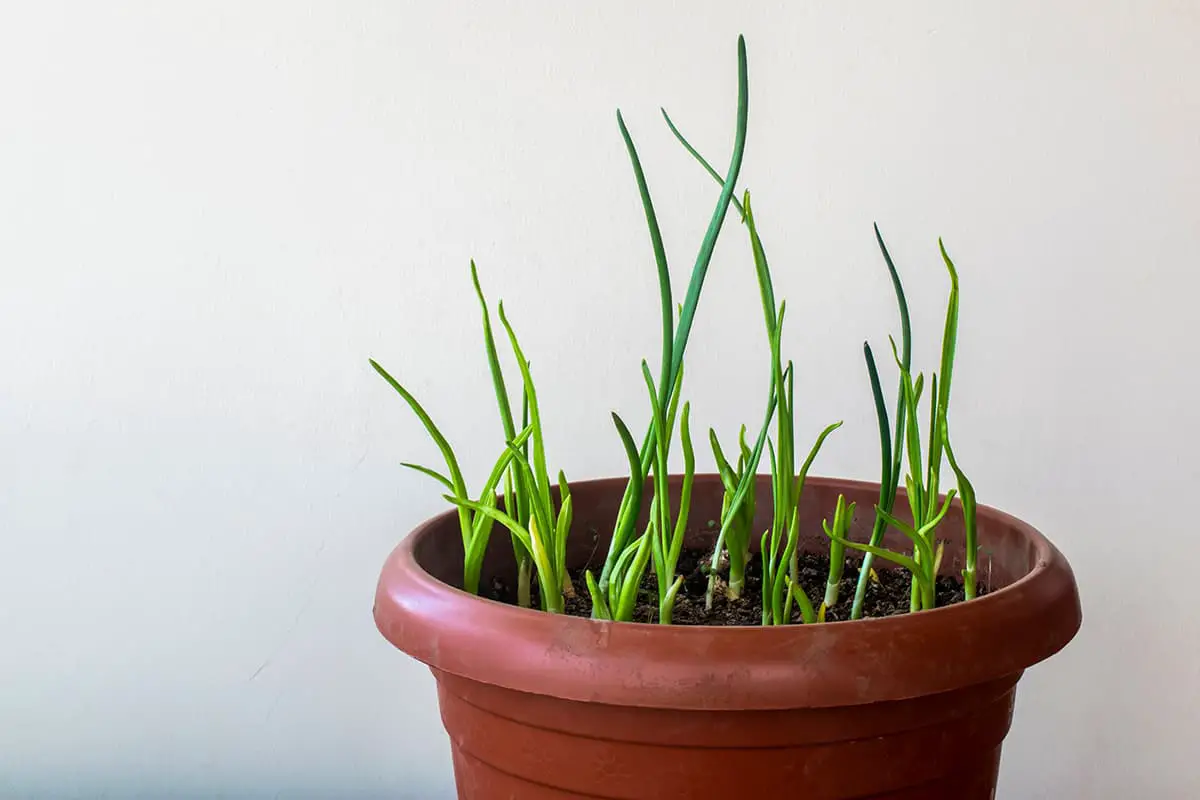
Garlic can thrive in pots even with some shade. Select a pot with a depth of at least 10 inches to accommodate the root system. Good soil drainage is crucial for healthy garlic growth.
Use a high-quality potting mix. Ensure it has good drainage. A pH between 6.5 and 7.0 is ideal for garlic. Adding compost can improve soil quality.
Garlic bulbs should be planted 2 inches deep and spaced 3 inches apart. Leave some space between each one so they have room to grow. Plant bulbils about ½-inch deep if using them.
Watering is essential for garlic. The soil should be moist but not soggy. Overwatering can lead to mold or rot. Check moisture levels regularly to prevent this.
Garlic prefers cooler temperatures. Plant it in the fall. Ensure the pots are in areas with partial shade. Direct sunlight is not necessary, but some light helps growth.
You can harvest garlic in summer. Look for yellowed leaves to know it’s ready. Remove the bulbs carefully to avoid damage. Allow them to dry before storing.
Store dried garlic in airtight containers. This prevents moisture absorption. Dried garlic chips are versatile in the kitchen. You can also make garlic powder or garlic salt. Mix one part garlic powder with four parts salt for garlic salt.
Raised beds can help improve drainage if pots are placed outdoors. They also help in managing soil conditions better, ensuring the best growth for your garlic.
Scallions
Scallions, also known as green onions or bunching onions, thrive in partial shade. Planted in pots, they grow quickly and require minimal space. You can harvest them early, ensuring a steady supply for your kitchen.
For growing scallions in pots, choose containers with a minimum depth of 6 inches. This allows their roots enough room to develop. Use a well-draining potting mix for optimum growth.
Water scallions regularly to keep the soil moist but not waterlogged. Overwatering can lead to root rot. Ensure the container has drainage holes to prevent excess water accumulation.
Scallions don’t need much fertilizer. A balanced liquid fertilizer every few weeks works well. This promotes steady and healthy growth.
Harvest scallions when they reach a usable size, usually 8-12 inches tall. Use clean scissors to snip them at the base. This encourages new growth from the same plant.
Scallions are versatile in the kitchen. Add them raw to salads or use them as a garnish. Their mild flavor enhances many dishes without overpowering other ingredients.
Chives
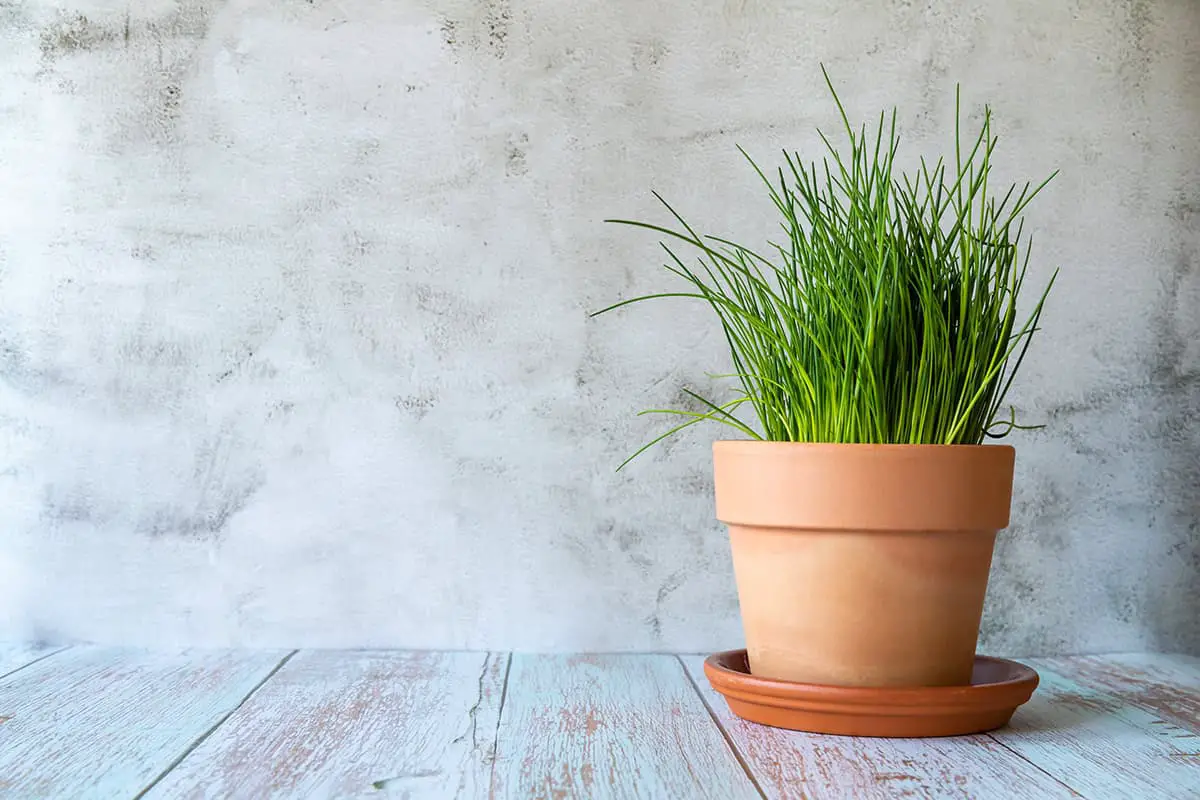
Chives are a versatile vegetable. They are easy to grow and thrive in shaded areas. You can grow them in pots, making them perfect for small spaces.
Chives thrive in well-drained soil. Select a pot with good drainage. Fill it with a mix of potting soil and compost.
Place the pot in a partially shaded location. Chives need at least four hours of indirect sunlight per day.
Water chives regularly. Keep the soil moist but not waterlogged. Overwatering can cause root rot.
Chives can be grown from seeds or transplants. Sow seeds 1/4 inch deep. Space them about 4-6 inches apart.
You can also plant chive clumps. Plant them in spring after frost danger has passed. This ensures better growth.
Chives are perennial. They will return each year if properly cared for. You can harvest chives by snipping leaves from the base.
Chives produce edible flowers. These flowers add a pop of color to your garden. They are also tasty in salads.
Indoor growth is possible. Place chives in a bright, sunny spot inside. A south-facing window is ideal.
Chives have a mild onion flavor. Use them as a garnish or in recipes. They are a great substitute for green onions.
Chives, including garlic chives, are part of the onion family. Both are reliable for shaded gardens.
Cilantro
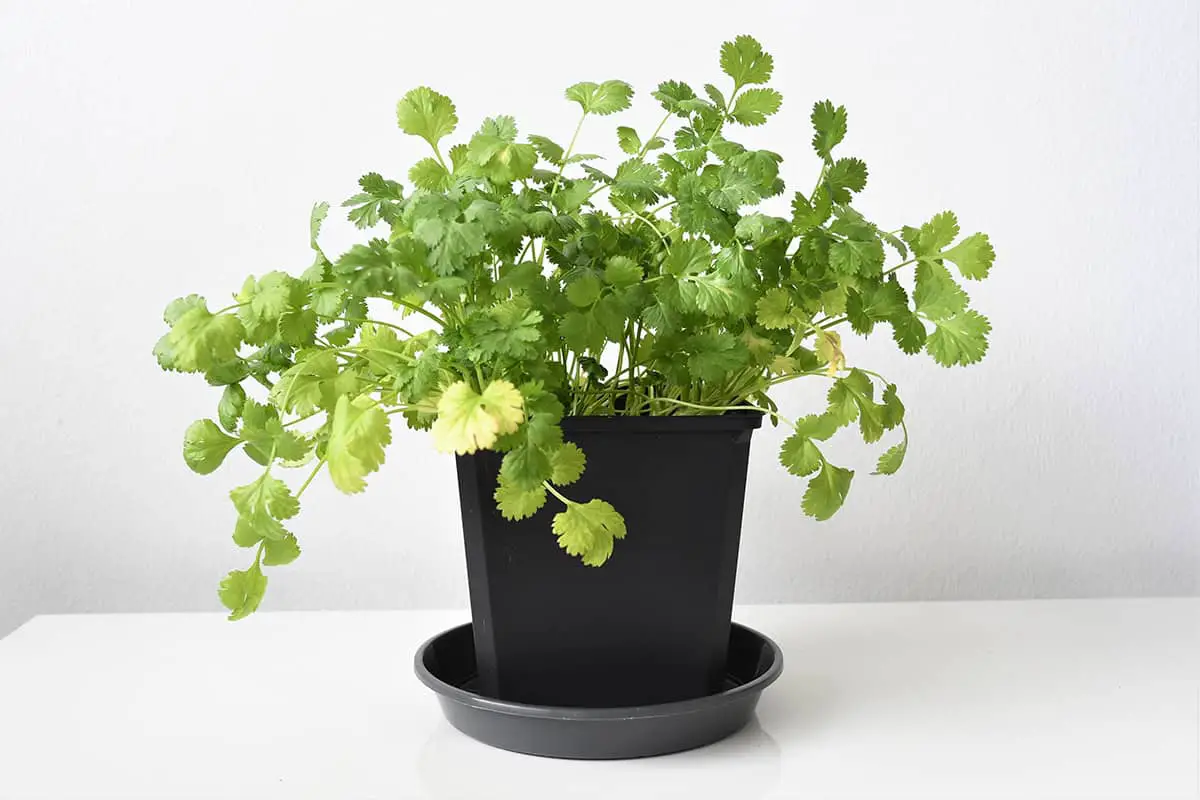
Cilantro, also known as Coriandrum sativum, is a versatile herb that grows well in pots. Cilantro thrives in well-drained soil with full sun but can tolerate light shade.
Plant cilantro in pots with at least 6 inches of soil depth. Your pot should have drainage holes to prevent waterlogging. Space plants 8 inches apart to give them room to grow.
You can start by sowing seeds directly into the pot. For a continuous supply, sow seeds every few weeks. This helps ensure you have fresh cilantro throughout the growing season.
Use a potting mix rich in organic matter. Cilantro is like soil that retains moisture but also drains well. Regular watering is key but avoid waterlogged conditions.
For best results, grow cilantro in the fall and winter. In warmer climates, like Florida, it tends to flower quickly in the heat. This is known as bolting, which means the plant produces flowers and seeds rapidly.
If you live in a cooler climate, you can plant cilantro in early spring. It thrives in temperatures between 50-85°F. This herb is also a great addition to your container garden alongside other herbs.
Cilantro’s foliage will be ready to harvest in 45-80 days. For a seed crop, you need a growing season of at least 100 days. It can also be grown successfully in containers with adequate care.
Mint
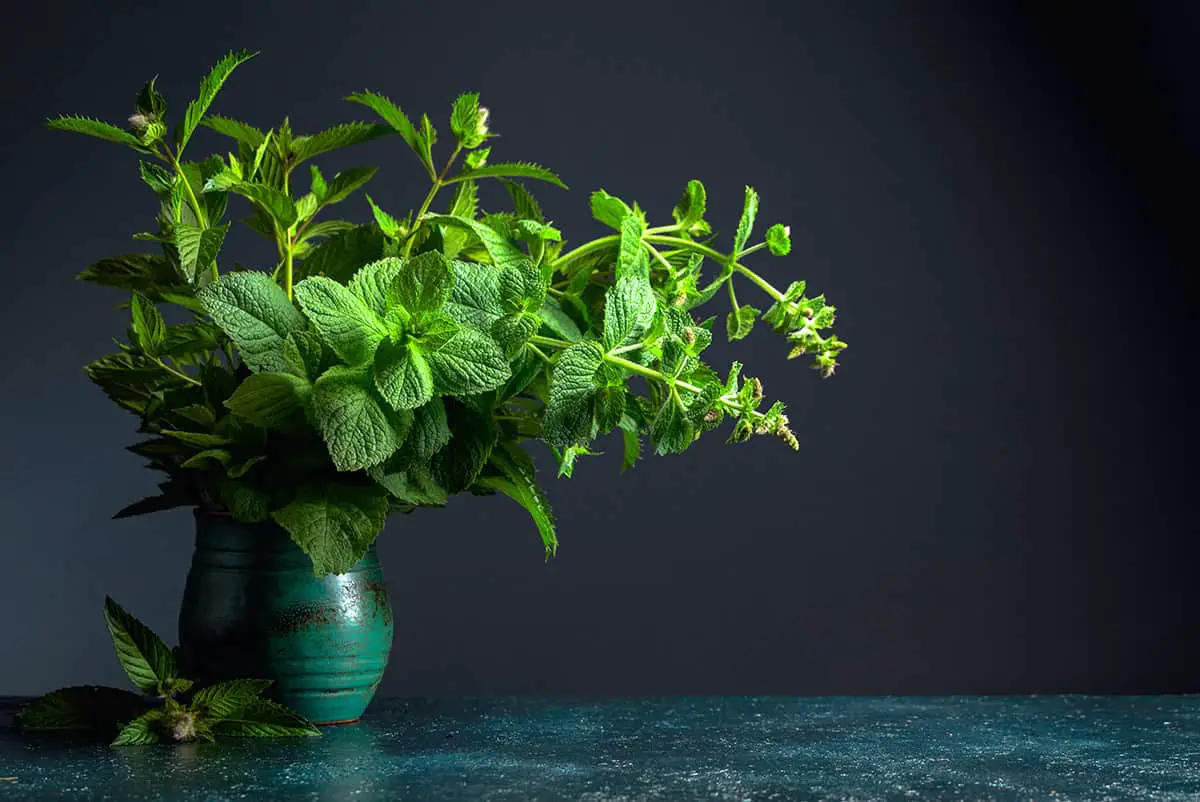
Mint is a versatile herb that thrives in partial shade, making it ideal for shaded gardens. You can grow it easily in pots. This limits its spread, which is crucial because mint can overrun your garden.
Mint prefers moist soil. Avoid waterlogging to prevent root diseases. Place your pots where they can receive filtered sunlight or light shade.
Harvesting mint is straightforward. Pick leaves and stems throughout the growing season. If the stems become woody, cut back within an inch of the ground to rejuvenate the plant.
For containers, use good drainage. Mint roots can fill pots quickly, necessitating annual renewal to maintain vigorous growth. Containers also help you control the plant’s invasive nature.
To avoid overcrowding, space plants about 12 inches apart. Use potting mix and ensure your pots have drainage holes. Regular watering keeps mint healthy, but do not let the soil stay soggy.
Renew mints every few years. Remove dormant stems and roots to prevent them from spreading. Young leaves have the most flavor, ideal for culinary uses.
Parsley
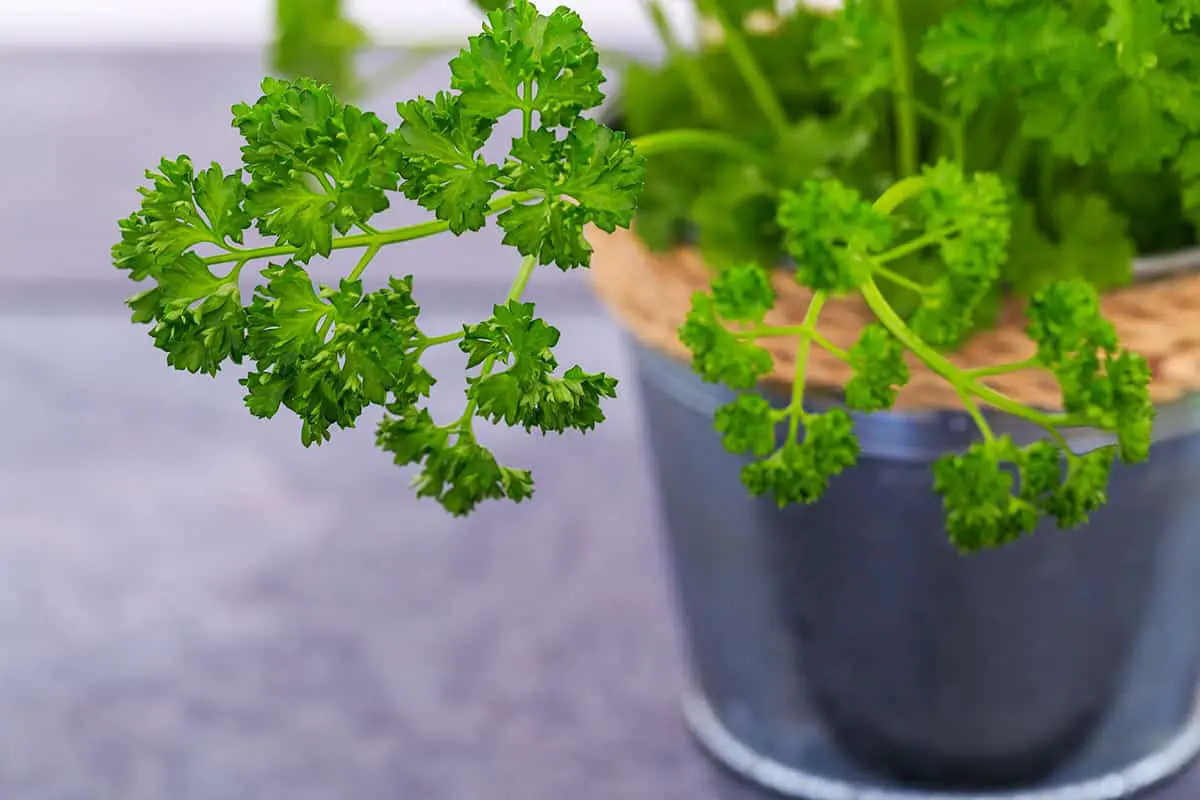
Parsley is a versatile herb suitable for shade. It grows well in pots. You need well-drained soil that’s rich in organic matter. Ensure the soil stays moist but not waterlogged.
Plant parsley seeds about ¼ inch deep. Space them 6 inches apart. This helps the plants grow strong. Parsley can grow in partial shade.
Keep your parsley in a spot with indirect sunlight. Too much sun might scorch the leaves. Indoor and outdoor conditions are suitable for parsley.
Regular watering is crucial. Water your parsley deeply once a week. This keeps the roots healthy. When harvesting, snip stems close to the ground. Start with the outer stalks.
Parsley is rich in vitamins A, C, and K. It also contains several B vitamins, calcium, and iron. Parsley adds flavor and nutrition to many dishes. You can cook it, use it fresh, or even dry it.
Italian parsley is especially flavorful. Hamburg parsley has edible roots and leaves. Both types can thrive in containers and shaded areas.
Bok Choy
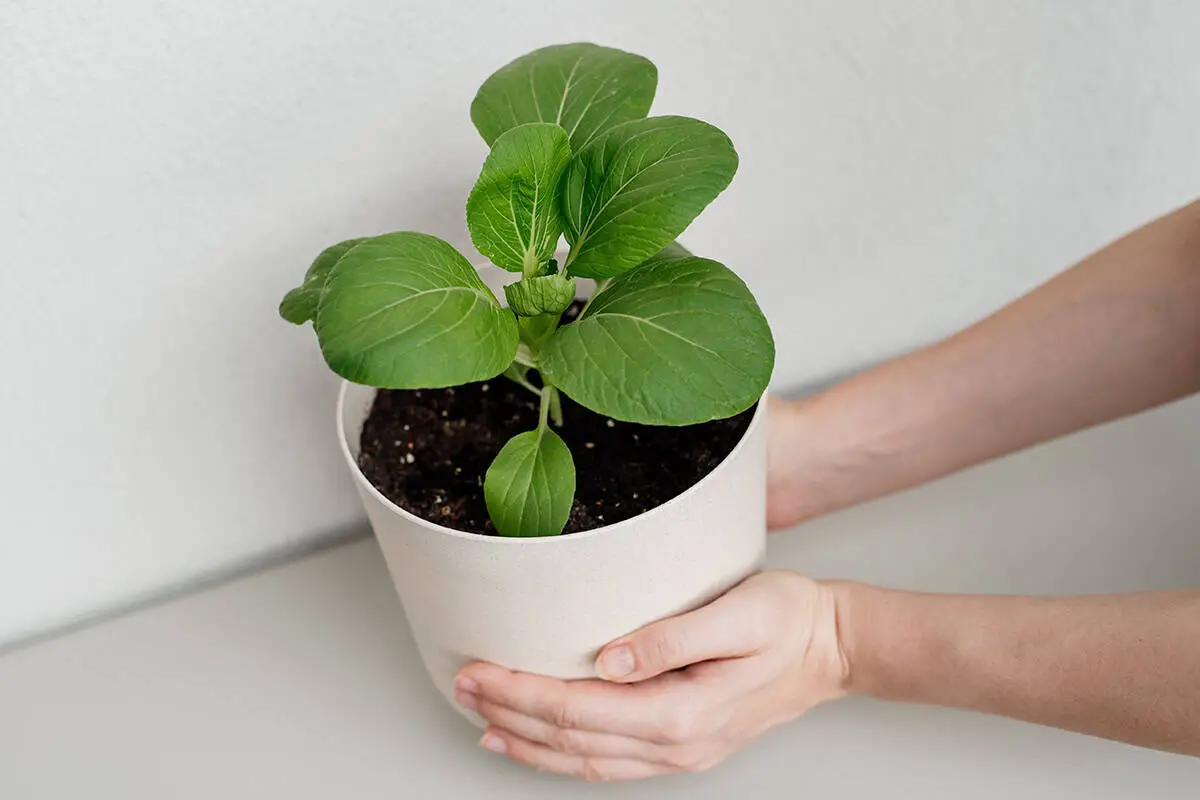
Bok choy, also known as Chinese cabbage, thrives in shaded conditions and can be easily grown in pots. This vegetable demands well-drained, fertile soil with consistent moisture.
When planting bok choy in containers, choose a deep pot with a minimum depth of 6 inches. This will help ensure the roots have enough space to develop properly. Bok choy prefers a pH range of 6.0 to 7.5 for optimal growth.
Plant bok choy seeds directly into the container in July, spacing plants about 14 to 18 inches apart. This spacing helps to avoid overcrowding and allows for proper air circulation. Place your container in a shaded area that receives indirect sunlight.
Bok choy requires regular watering to keep the soil consistently moist but not waterlogged. Mulching around the plants can help retain moisture and reduce the need for frequent watering.
Fertilize your bok choy with a balanced, slow-release fertilizer to provide the necessary nutrients. This will aid in steady growth and help prevent the plants from bolting prematurely.
Popular bok choy varieties like Napa, Michihili, and Shanghai bok choy are great options for container gardening.
Mustard Greens
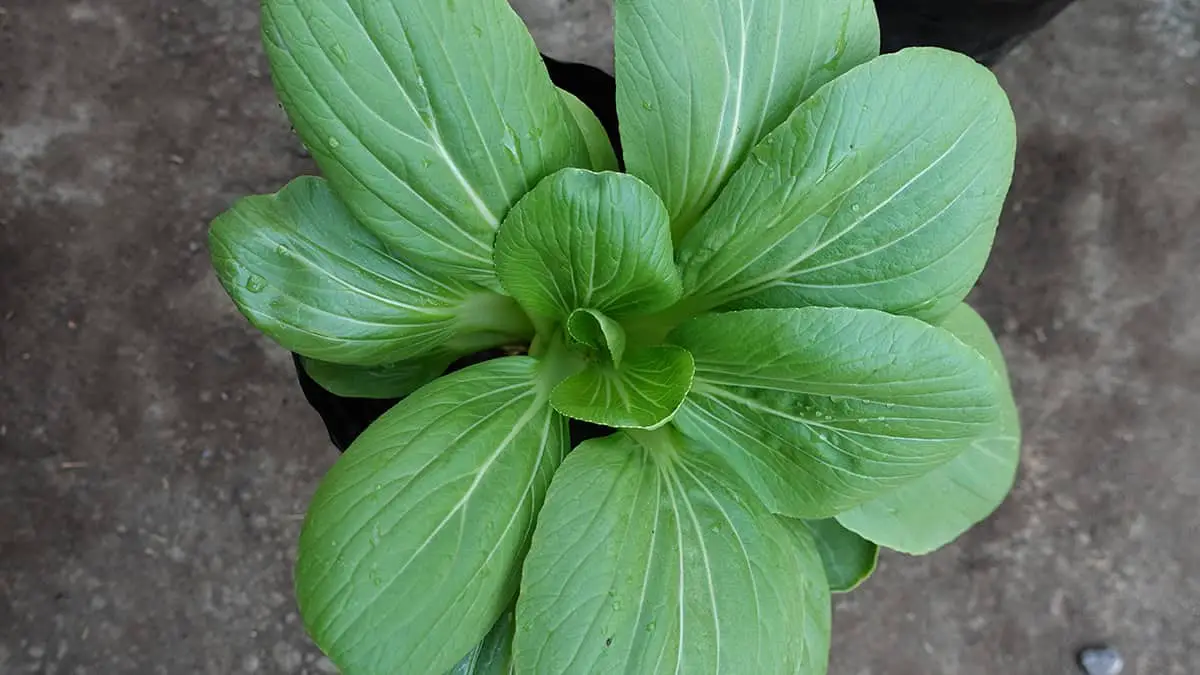
Mustard greens grow well in partial shade. You can easily cultivate them in pots. These leafy greens are attractive and offer a peppery flavor.
A 3 to 5-gallon pot is ideal for growing mustard greens. They require good drainage. Use a high-quality potting mix for the best results.
For watering, consistently keep the soil moist. Water deeply, but avoid waterlogging.
Mustard greens tolerate partial shade. They thrive in 4-6 hours of sunlight daily.
Mustard greens mature quickly. You can harvest them in 30-40 days. Pick the outer leaves first for ongoing harvesting.
Pests like aphids and flea beetles can affect mustard greens. Regularly inspect the leaves for pests. Use organic insecticidal soap if necessary.
Endive
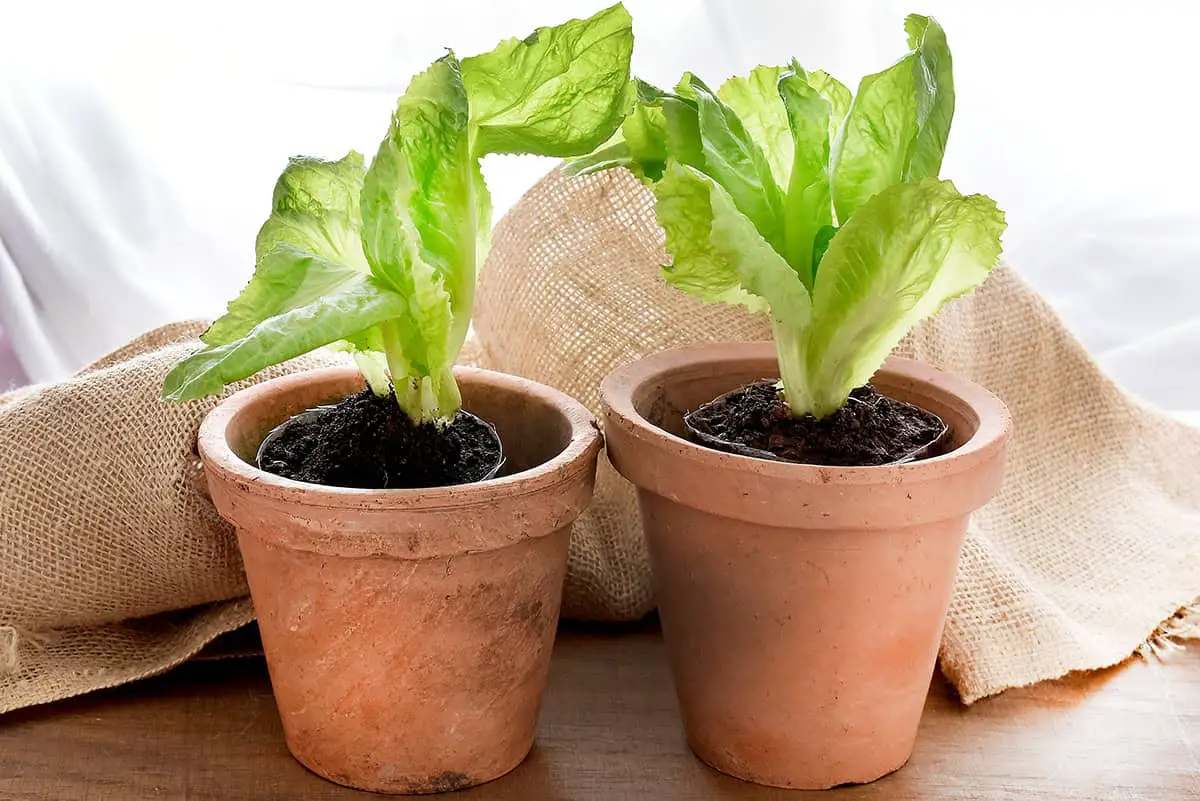
Endive is a great vegetable for shady pots. It’s a cool-season, leafy vegetable often used in salads. Known for its unique texture, endive adds both flavor and crunch.
There are different types of endive. Some have broad leaves, known as escarole, while others have curly, ruffled leaves, called frisée. Endive, specifically frisée, is sometimes called “on-deev.”
Endive grows well even in partial shade. This makes it an excellent choice for container gardening in shaded areas. It thrives in cooler weather and matures faster under cooler conditions. This means you can harvest it sooner than other leafy greens.
Grow endive in a well-draining potting mix. Make sure your container is at least 8 inches deep for good root development. Regular watering is essential, but ensure the soil doesn’t get waterlogged.
Harvest endive when the leaves are tender. Regular harvesting encourages new growth. Use it in fresh salads or as a garnish for various dishes. The unique texture and slightly bitter taste will elevate your culinary creations.
